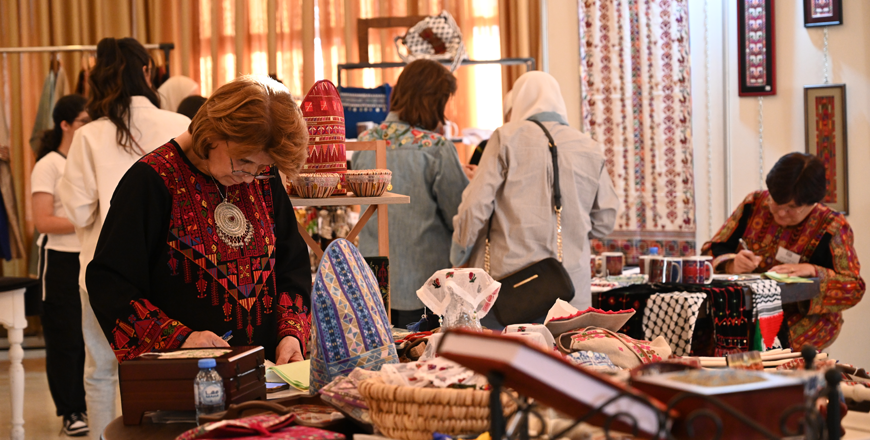PARIS — The Kingdom of Saudi Arabia on Monday inaugurated the first Arab Week at UNESCO headquarters in Paris, featuring cultural and artistic exhibitions, a fashion show, a market for Arab cultural products, an exhibition of Arabic calligraphy, and another showcasing images of heritage sites in the Arab world registered with UNESCO.
Launched by Jordanian Ambassador to France Lina Hadid, the Arab Week included the participation of twenty-two Arab countries. Over two days, the Jordanian Embassy opened the events with speeches emphasising the importance of such gatherings that highlight the rich Arab cultural heritage. This heritage encompasses a collection of values, principles, customs, and traditions that represent the modern Arab.
The events included seminars on Arabic literature, artificial intelligence, the Arabic language, calligraphy, education, and children’s literature, as well as discussions on traditional songs and performances related to the Arabic calligraphy competition, along with showcases of artists' and artisans works, including a live show that represent a sand drawing technique.
Numerous cultural activities were held, featuring displays of handicrafts and embroidery, exhibitions of contemporary paintings and photographs of archaeological sites, alongside musical performances on the oud and sessions of traditional songs that captivated the audience.
The heritage and history of the Hashemite Kingdom of Jordan, dating back over 7000 years B.C., from the statues of Ain Ghazal to the Arabian, Nabatean civilisation, along with the breathtaking and unique nature of Jordan—such as the Dead Sea, Petra, and the ruins of Jerash and Madaba— were all featured in brochures and table books were available to visitors at the Jordanian corner.
This included a display of traditional jewellery and embroidery, handicrafts, and a painting by artist Abdullah Tamimi. Additionally, games that contribute to cognitive skill development were showcased, along with the internationally renowned Dead Sea salts, the Jordanian shemagh, traditional clothing, and a screen displaying the most important tourist attractions in Jordan that distinguish it globally, along with performances of traditional Jordanian songs and oud music that engaged the audience.
Rare types of falcons were also displayed, captivating the audience, alongside a showcase of Saudi fashion, accompanied by oud music and singing. Saudi Arabian coffee infused with cardamom, and dates, were also offered.
Morocco presented a distinguished performance of Andalusian music, along with a display of Moroccan fashion, particularly the caftan. The Moroccan corner showcased handicrafts, with some artisans creating their crafts in front of the audience and organised several cultural activities, including displays of embroidery, metal engraving, alongside musical performances on the flute and oud.
The Syrian corner showcased soap, perfume, and Damascene rose water. The Damascene rose had its own story at this event, as a fragrance that has inspired poems by Shakespeare and Nizar Qabbani. This ancient Syrian product dates back centuries and requires significant effort and large quantities of roses for distillation.
The Omani corner presented several traditional crafts, but what caught the audience's attention was the watercolour paintings that depicted the breathtaking landscapes of Oman.
The Palestinian delegation to UNESCO, led by the chargé d'affaires Hala Tawil, organised several Palestinian cultural activities, including displays of handicrafts, embroidery, and metal engraving, alongside musical performances on the flute and oud, and a participation by a Palestinian chef who presented a selection of traditional Palestinian dishes.
The event concluded last night with a celebration featuring contemporary dances, traditional songs, and performances on the oud, qanun, and flute.
At the end of the ceremony, the Arab countries invited attendees to dinner, featuring a variety of dishes ranging from the Jordanian mansaf, which has roots extending back hundreds of years and is associated with the hospitality of the Bedouins, to Moroccan couscous and tagine, Egyptian koshari, Palestinian freekeh, and various Gulf dishes. This food festival is tied to the values and authenticity of Arabs, reflecting traditional Arab customs related to hospitality that have been passed down through generations.














